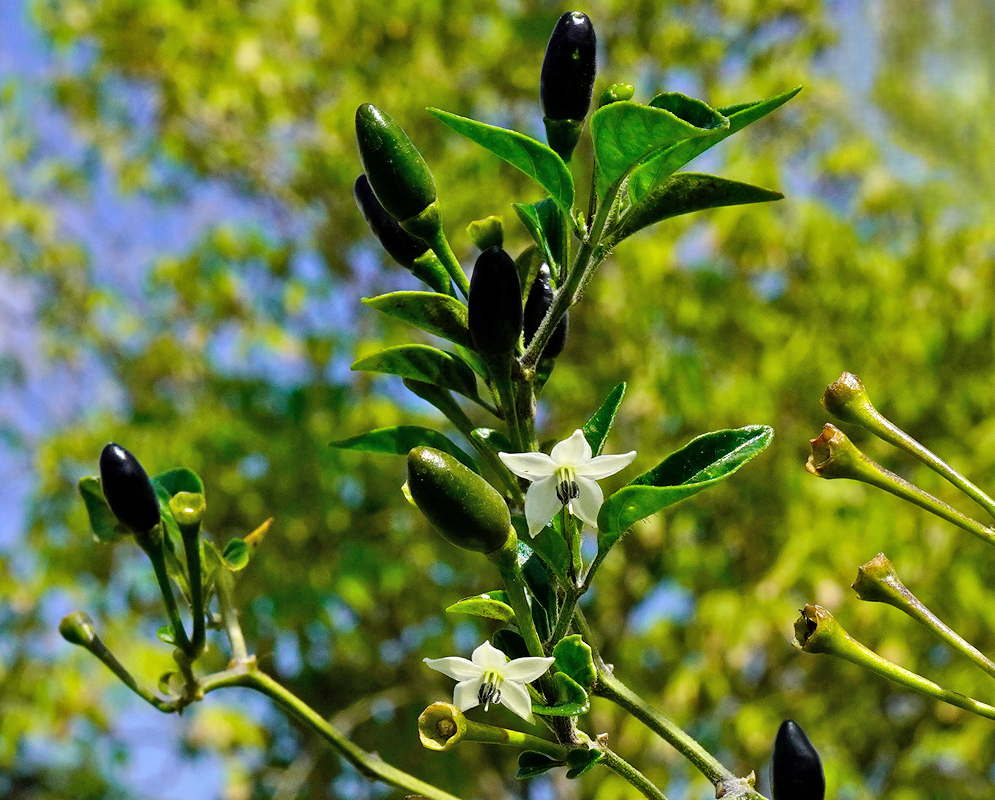This post has 11 Simple Fields-fields attached. Show fields.

Native to Mesoamerica and northern South America, Capsicum frutescens now occurs across the tropical Americas. It grows as a short-lived perennial subshrub, typically 2–4 ft tall, branching densely in warm lowlands and gardens. The best-known common name in English is tabasco pepper (the cultivar used to make Tabasco sauce). Flowers are diagnostic: five white petals without throat spots, plus purplish to dark anthers; this separates it from look-alike domesticated peppers. Fruits are slender, upright capsules about 1–1.6 in long that ripen through green and often purplish tones to red; the ‘Tabasco’ type is noteworthy for its juicy walls, unlike most chiles, which is why the pods are fermented whole before being strained for sauce. Heat level commonly ranges from 30,000–50,000 Scoville units. Topical creams standardized for capsaicin—the pungent compound concentrated in the pod’s placental tissue—are FDA-cleared for temporary relief of neuropathic pain. In tropical cities the plant is also grown ornamentally for its continual set of erect fruits and compact habit, and it can persist several seasons where frost is absent; in humid tropics it has naturalized along roadsides and field margins but is typically managed as a crop or kitchen-garden plant rather than as a landscape invasive. Photographed in Peru.

